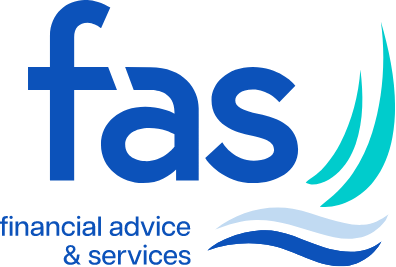
Since the COVID-19 pandemic, we have noticed an increase in the number of people coming to us for financial advice. We see this as evidence of the real need for people to seek out professional advice to help with their financial concerns and aspirations. So, we wanted to share some of the questions that should be asked when anyone chooses to meet with a financial adviser.
1. What are your professional qualifications?
It always makes good sense to find out what professional qualifications a financial adviser has attained. When it comes to finding the right person, it is important to start with a feeling of trust. You want to feel reassured that they are professionally competent and that they have the necessary specialist knowledge, experience, and technical expertise to be able to advise you properly. Of course, a professionally qualified adviser will be pleased you asked the question and will be more than happy to disclose their credentials as they will have worked very hard to pass their exams!
One of the challenges with the UK financial services sector is that there are a number of different bodies that assist in the attainment of industry professional qualifications entitling someone to be called a ‘Financial Adviser’. These include the Chartered Insurance Institute, the Personal Finance Society, the Institute of Financial Planning, the CFA Society of the UK, and the Chartered Institute for Securities and Investment. All Independent Financial Advisers in the UK are regulated by the Financial Conduct Authority (FCA) and can be found on the FCA register.
At FAS, we are part of a relatively small group of independent financial advice firms in the UK to have been awarded the ‘Chartered Status’ from the Chartered Insurance Institute. This is considered the ‘gold standard’, in terms of commitment to professional excellence and integrity. The Chartered Insurance Institute only awards Chartered Status to firms with the highest level of advanced qualification, an overall commitment to continued professional development, and adherence to an industry-standard Code of Ethics.
2. What services do you provide?
People decide to talk to a professional financial adviser for any number of different reasons. Perhaps they have experienced a sudden change in their personal circumstances or decided that the time is right to start planning for their future.
At FAS, we call ourselves financial planners because we believe in offering our clients a comprehensive service that takes everything into account. While some financial advisers can be relied upon to recommend a particular product or service, we believe financial planning should be holistic and more about the actual advice than simply selling financial products.
Our team will talk to you and take whatever time is needed to help determine both your shorter and longer-term financial aims and objectives. This means that as well as covering more immediate issues, such as tax-efficient investments and savings, mortgages and protection and family arrangements, we will also cover a wider variety of topics such as your retirement goals, inheritance tax and estate planning, and any potential later life care needs. For example, tax planning is one of our specialist areas, and because this is such a potentially complex area, it is important that a client receives comprehensive professional advice tailored to their personal situation, rather than receiving generic advice.
Our aim is to work with you to build a well-considered, robust financial plan that can give you peace of mind and allow you to work towards the future you want for yourself and your family. We would always say that a financial plan is better than just selling a product, but this is an important discussion to have with any financial adviser you are considering using.
3. How do you get paid for providing financial advice?
This is an important question to ask anyone who provides financial advice, and it is an answer that most advisers will already have prepared in advance. We believe that the best financial advice pays for itself in the long run and that the best available advice is independent in nature.
As the name suggests, an independent financial adviser will offer you impartial, objective advice on financial products and services. This means they will carry out research across the whole of a particular market to find the right solution to suit you personally. The alternative is a ‘restricted’ financial adviser, who can only recommend products from a limited selection or product range, not from the entire marketplace. Restricted advisers are usually incentivised to recommend products or services from within the available product range.
We have noticed an increasing number of clients who have come to us because they have been disappointed by the performance of managed portfolio products recommended to them by restricted advisers. This is because in most instances the adviser can only recommend the managed portfolio service from the investment company they work for. However, if you receive an investment recommendation from an independent financial adviser or planner, they are able to research and choose the associated product from the whole of the market, not just one provider.
4. What experience do you have advising people in my situation?
One of the most common questions we hear from new potential clients is whether we have experience advising clients in a similar situation to their own. More often than not, the response is a resounding ‘yes’. We have been providing independent financial advice since 1991 so for 30 years we have been able to provide our clients an exceptional level of personal service, tantamount to what you should expect to receive from any professional practice.
We often receive enquiries from potential clients who have had a less than welcoming experience from larger financial advice firms, which has left them feeling neglected while ‘bigger’ clients are prioritised. No one wants to be made to feel like a ‘little fish in a huge pond’, which is why we have continued to expand the business to make sure that both new and existing clients remain well looked after and receive the attention they deserve.
Summary
People often make the decision to talk to a financial adviser because they have a specific issue in mind, usually one that demands immediate attention. But looking beyond that, you should look to forge a relationship with a financial professional who understands you, your personal needs, and your lifestyle goals – someone who will be able to use their knowledge and experience to turn this into a well-defined financial plan.
Above all, it is worth thinking about the relationship you have with your financial adviser. It should be capable of lasting for many years, you should feel comfortable with that person and expect to continue to benefit from their advice well into the future.
If you are interested in discussing your financial plan or investment strategy with one of our experienced financial planners at FAS, please get in touch here.
This content is for information purposes only. It does not constitute investment advice or financial advice.













